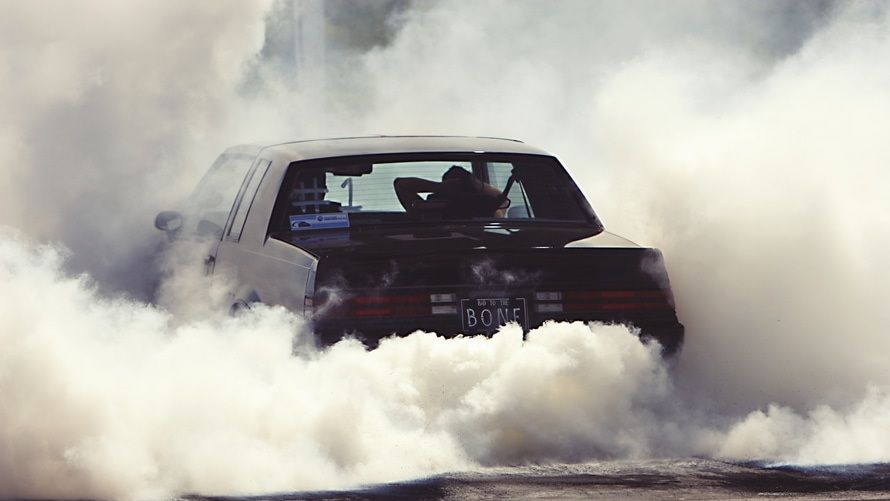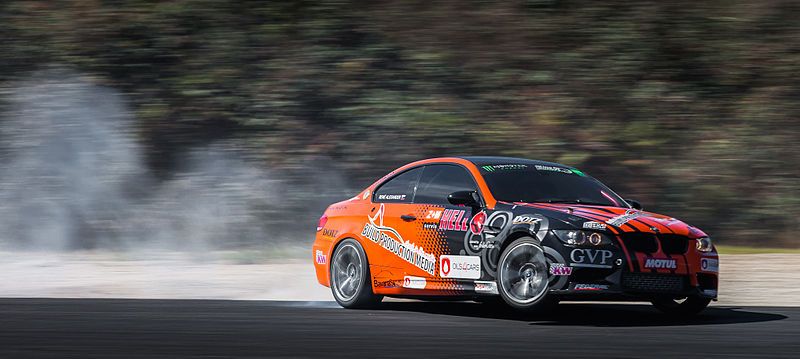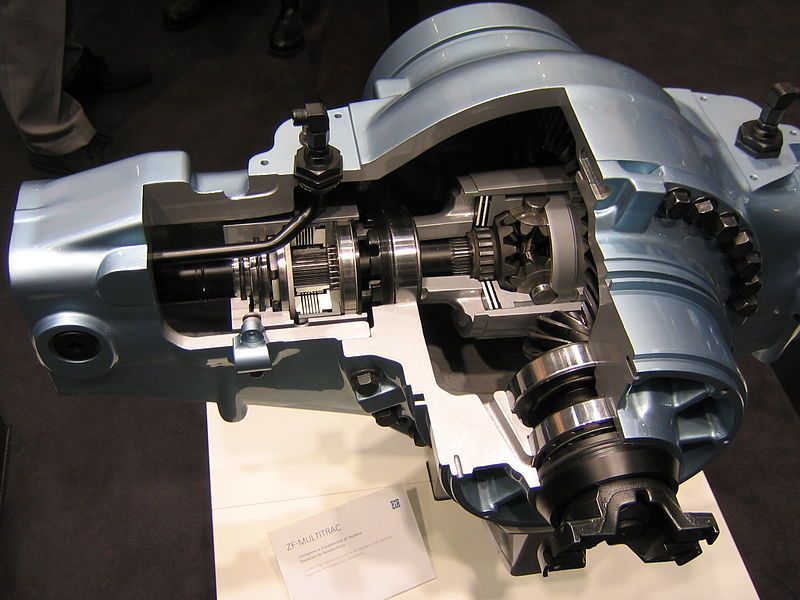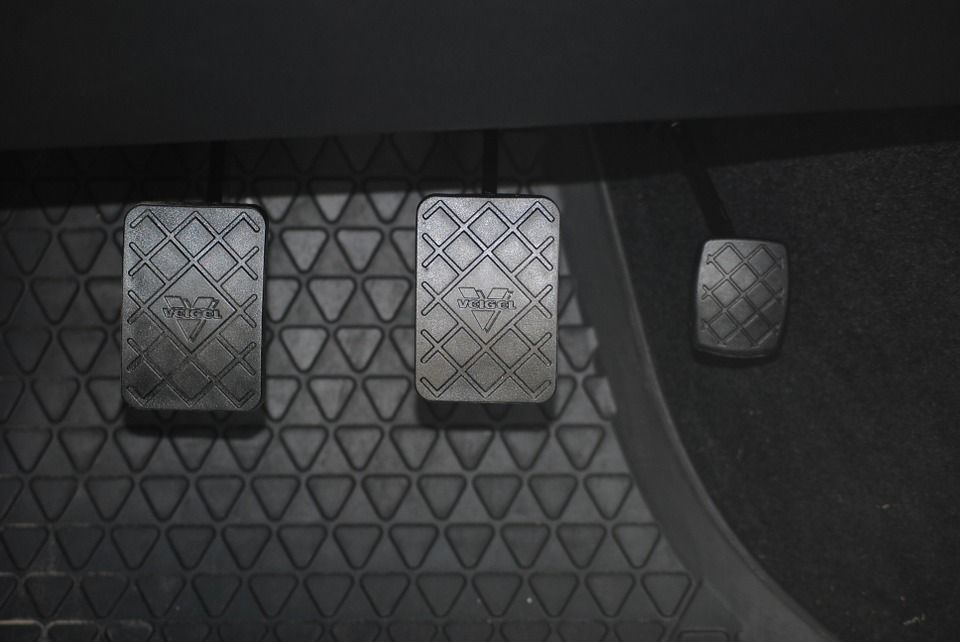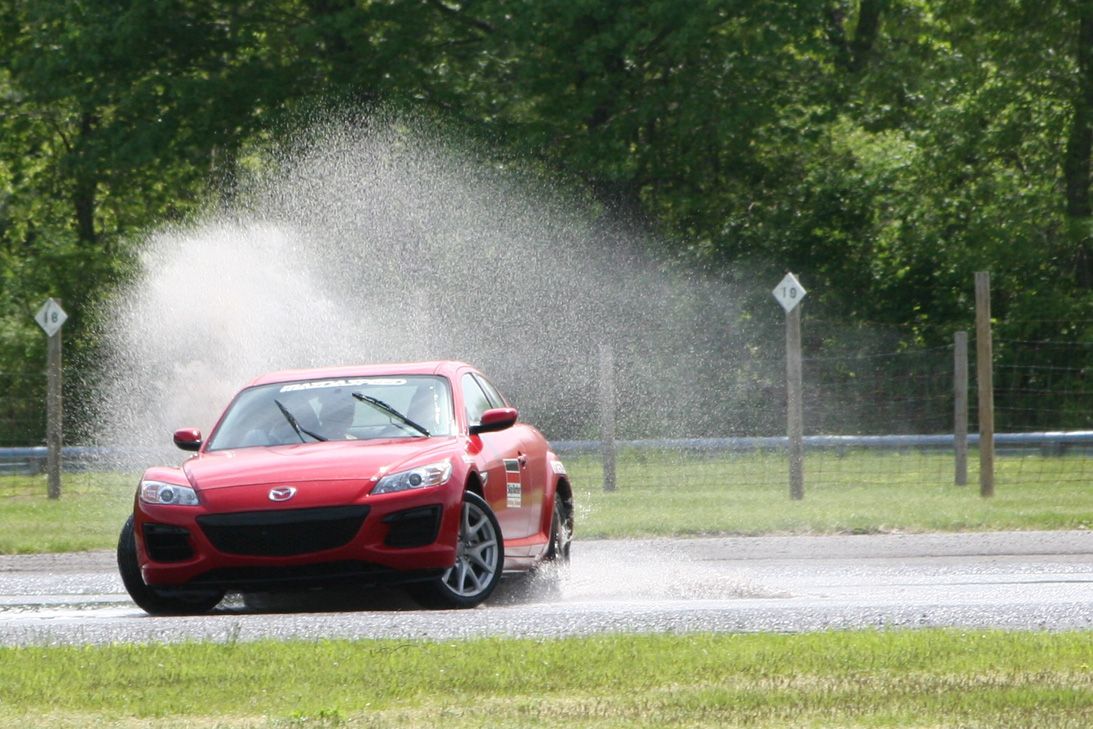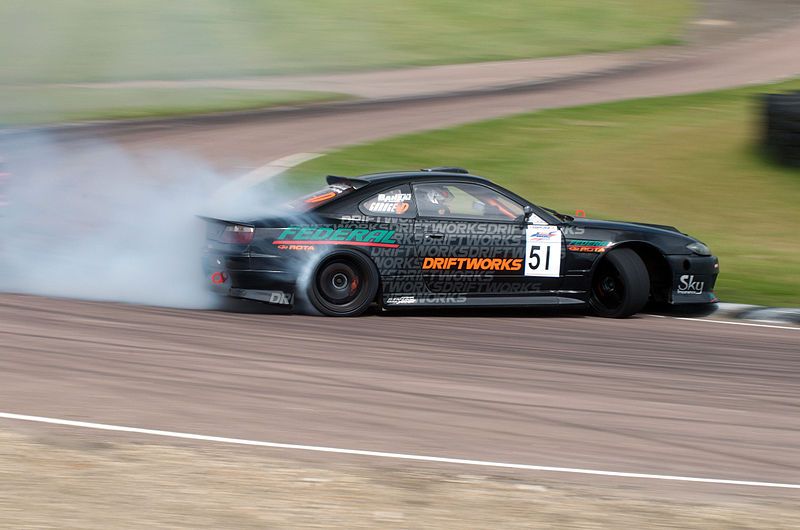Burnouts. They are a great past time for any guy who has had a car with a little bit of power and a necessary evil for those who like to hit the quarter mile strip on the weekend. It seems pretty easy, right? Slam the gas, let the wheels break loose, steer the car, and hope people stay out of your way. Unfortunately, it’s really not that simple. The internet is littered with videos->ke278 of “that guy” and the untimely demise of his car because he just didn’t know what he was doing.
See, there is a lot more to burnouts that just having raw power in your hands. There is a science to it, as well as skill. You have to know your car, how to control a skid, and everything has to be just right, or you might end up biting a curb, destroying your car’s drivetrain, hitting another car, or worse. In this article, we’re going to cover the science behind burning out, why things tend to go wrong, and discuss how to do it the right way, so you don’t end up staring in the next viral video of a driver who bites off more he can chew while leaving an auto show.
Before we get too far ahead of ourselves, I want to start by saying that there is an overwhelming number of burnout fail videos involving Mustangs.->ke428 I don’t know why that is. I do have an opinion, but we’ll leave that discussion for a more appropriate forum (maybe the comments section below.) That said, I have made it a point to only include one Mustang fail video here so you Ford->ke31 fans don’t get your panties in a bunch. Other bits we’ll discuss include a Chevy Camaro->ke248 that eats the curb, a Dodge Charger->ke218 that loses its nose, a BMW->ke178 that catches on fire, and a Chevy Corvette->ke1280 that will need a lot more than $600 tires after a failed attempt at burning out. While it might be fun to laugh at the guys here (not that they don’t deserve to be laughed at, at least a little,) the important thing here is to identify what went wrong, why things took a nasty turn, and what you need to know so your car can live to show off another day.
Disclaimer
For the most part, we’ll be talking about rear-wheel-drive cars, but for those of you who are stuck with front-wheel drive or enjoy the benefits of all-wheel drive, we’ll cover a little something for you too. Keep in mind that burnouts are illegal on most public roadways, and the penalties can be quite hefty in some locals.
In all honesty, burnouts should only be performed on a track or private property. But, if you must succumb to the overwhelming desire to show off on public roads, be sure you know what you’re doing. You don’t have to end up like the guys in the fail videos you're about to watch Remember, you are responsible for your actions and the safety of those around you, so buckle up, be aware of your surroundings, and above all, be safe.
The Little Things
Before you jump in your car and try to show off, it is important to know how different things can affect your control over the vehicle. Things like weight distribution, tire pressure, the type of differential your car has, the type and condition of the tires, and your ability to control the throttle all play a part in how you control your car. Something as simple as an air pressure difference between the two drive tires can cause one tire to grip more than the other – this is a common reason for a car to sway to one way or another during a burnout. This isn’t all that big of a deal if you’re sitting in one place but, if your vehicle is moving forward as well, you could lose control.
Weight Distribution
Weight distribution is another factor to consider. Rear-wheel-drive cars are generally lighter in the rear, which does make it easier to break the tires lose. But, you need to take into consideration the shift of weight during your burnout. If you’re attempting to burn out as you complete a turn, any weight shift in the rear can cause the rear end to kick out, and you can lose control. It might not seem like much, but even a gallon of water moving from one side of the trunk to the other can be enough of a weight shift to kick out the rear end more than you expect. Furthermore, the vehicle’s center of gravity will also change as the car leans to one side during your moving burnout, which can cause the rear end to slide out more than you expect.
The Differential
For the most part, the best rear end for burning out of drifting is a limited slip rear end. With this type of rear end, torque is distributed to both wheels when the tire to the outside of your curve begins to spin. This might not be important for you guys who burn out in one spot but, if you’re trying to get funky as you leave the local auto show, it is the rear end you want. If your car has an open rear end, you might experience control issues. With an open rear end, torque is sent to the tire that is encountering the least resistance. When this happens, one tire will tear ass, while the other simply does nothing – not a good situation if you want to maintain control of the vehicle.
Throttle Control
If you think doing a burnout and getting sideways is as simple as mashing the gas hard enough to break the tires loose, remind me to keep a good distance from you. Believe it or not, throttle control is huge when it comes to controlling a burnout. Too much throttle and the tires will break loose, but your engine will “bounce” off the rev limiter, momentarily cutting torque from the wheels. This can cause you to suddenly gain traction and shoot off in one direction or another. When it comes to drifting or getting sideways around a bend, a good driver knows how to feather the throttle to keep the engine in that sweet spot without engine speed dropping so low that too much traction is achieved or revving to high and hitting the rev limited.
Steering functions
If you live in an area where it snows, one of the primary things you learn is to always steer into a slide to keep control of the vehicle. The same rule of thumb goes for burning out on the move. By steering in the same direction the rear end is going, you prevent the rear end from wrapping around and you losing control. Throttle control still comes into play here too because, if you suddenly gain traction while your front wheels are turned, your car will shoot off in that direction. Steering to the opposite direction the rear end is moving will help swing the rear end around, and with any luck, you’ll just do a couple of donuts and not end up a star in the next viral fail video on YouTube.
When things go wrong
If you don’t know your car, or don’t know what you’re doing, you could end up like one of the people in the videos below. Not every failure is tragic, but when you try to play around on public roadways, bad things tend to happen. It’s fun to believe that we live in the world of movies where people always get out of your way, cars can do unbelievable maneuvers, and things always work out, but that isn’t the way things work in real life.
Mustang Smacks a Dodge
Can you spot why the driver in this video lost control? With a rolling start, the driver hits the gas, and the burnout commences. Notice how the car jumps just a little bit just before the driver loses control? For one reason or another, the car gained traction while the driver was attempting to steer into the skid. When the rear end gained traction, the car immediate followed the front wheels as the driver remained on the gas. He attempted to hit the brakes, but at that point it was too late, and he was in for the ride of his life.
Right before the car begins to head for that truck, at 0:22-seconds into the video, you hear the engine bump for a split second. One of two things happened here – the driver either attempted to upshift, cutting torque to the wheels for just a second, or the engine bounced off the rev limiter, causing the same effect. Never shift during a burnout with the wheels turned or hit the rev limiter when you’re showing off. That split second where torque is interrupted was enough to ruin this guy’s weekend, which ended with a trip to the local hospital in an ambulance.
Camaro Bounces off the Curb
After watching this video, one could argue that the driver messed up the second he let off the brake and let the car start moving, but it wasn’t at this point that he lost control. It appears this Camaro had an automatic transmission so, naturally, the transmission will run through the gears as the rear wheels gain speed, unless locked into a lower gear.
This wasn’t the problem, but as he began to gain traction he also let off the gas altogether – right before the car slid out of control. If you look closely, you’ll see the wheels kick to the left a little bit as the driver starts to correct for the rear end sliding out a little bit. He failed when he let off the gas with the wheel turned. The rear tires gained traction; the rear end ripped around to the right and bam, there’s the curb. Fortunately for him, the car is still driveable, but you can bet that front, right wheel is probably bent, and he’ll be replacing some ball joints and getting an alignment sooner than later.
Charger Needs a New Nose
This driver wasn’t as fortunate as the guy in the Camaro. It’s pretty clear that this guy had no idea what he was doing, and had no business trying to show off. He put himself and others at risk. When he pulled out, the rear end started to kick to the left; he corrected the steering, but he overcorrected, which caused the rear end to kick out to the right – and this is where he really fouled up. Instead of riding it out and doing some corrective steering, he panicked and hit the brakes….hard. The wheels locked up, and the car continued on its trajectory right into that curb and the wall next to it. I bet he'll think twice before showing off again.
For what it’s worth, the guy in the wannabe General Lee showed this guy how to shred a little rubber without looking like a moron.
BMW Gets Toasty
This guy almost has the right idea, but he made two fatal mistakes. First, he was clearly doing his burnout on private property, so kudos to him for that. Furthermore, he executed a brake torque burnout pretty well, but his choice of location and the duration was his biggest mistakes. Notice how the engine was bouncing off the rev limiter? Well, his tires were moving fast enough that that he didn’t lose traction, but he chose to position most of his car over grass.
As the engine was bouncing off the rev limiter, the temperature inside each combustion chamber of his engine was skyrocketing. This causes the exhaust to get even hotter than normal as the heat from the combustion process heats the exhaust piping. Next thing you know, he’s generating enough heat to ignite just about anything underneath him, like grass or leaves.
When the camera man told him about the fire, the driver should have backed the car back onto the pavement, but instead, he shut it down and left it to sit there and burn. We don’t get to see the end result, but you can bet he has some work to do before he’ll be playing like that again.
On another note, you shouldn’t brake torque a vehicle for this long. As you noticed his rear pads were throwing sparks and the rotors were hot enough to glow red. This has several negative effects. The rotors are probably warped, the pads are fried, the brake fluid is now burnt (yes brake fluid can get toasted, and it does cause negative effects,) the boot in the caliper will probably start leaking, and this much heat can even damage the rear wheel bearings. Needless to say, just don’t brake torque a vehicle for this long.
That’s Not the Tires Smoking Mr. Corvette Z06
This is one of those situations where you really can’t help but laugh at the whole thing. Goodbye, $600 tires? How about goodbye $2,500 for a new clutch, flywheel and the labor to replace them. Okay, seriously, though. In his defense, performing a brake torque burnout with a manual transmission can be difficult, but this is still ridiculous. Obviously, he jumped on the brakes a little too hard, and the torque output from the engine couldn’t overcome the pressure applied to the brake rotors. It was enough to cause the clutch to slip, and slip that clutch did.
The first hint something was wrong was when the car quit trying to move altogether – he should have realized this. The second hint would be the smell. If you’ve ever burned a clutch, you know that hideous smell and that it is nothing like the smell of burning rubber. Not to mention the fact that the smoke immediately started coming from the front of the car. Line lockers are available to make burning out with a manual transmission easier.
You’ve got to love how all of his buddies are wearing mechanics shirts, but let him keep going, then say “I don’t know” when asked what happened. Any bets that they’ll be the ones overcharging him for that clutch job?
Doing it the Right Way
In all reality, you should only perform a burnout on the track or on private property. Still, if you decide you want to showboat, you need to do your homework to avoid looking like any of the people in the videos above. Burning out in place is fun, but it's not as fun as getting sideways and really showing off, so I know that’s where your interest really lies. First of all, you need to practice controlling a burnout in a secluded area away from people and traffic – preferably a place where the police won't get called, too. Learn you car, learn its throttle and learn its limits because every car is different. Learn not to panic when things go a little wonky – the worst thing you can do is lock up the brakes because then you have no control. There is a reason professional drivers practice hitting the track and learn their cars before major races.
If you’re planning to showboat, take care of a few things first. Make sure the air pressure in your drive tires is identical. The tires on your car should also match, and have a matching tread pattern with equal wear. Remove any unnecessary weight from the vehicle and make sure any weight that is there is centered and unable to move or shift abruptly. Another important factor is your suspension. A firm suspension setup might make the car ride rough on the daily but ultimately allows less body roll during extreme maneuvers. With less body roll, the car’s center of gravity doesn’t shift as much when maneuvering and the car is easier to control while you’re shredding some rubber.
All of these things will affect traction, and ultimately how your car will act as you get a little frisky. Now that you know those basics let’s talk about different ways to burn out.
The Brake Torque
The brake torque is the best and safest way to burn out because you don’t have to move. It’s what our friend in the Z06 Corvette was trying to do, and what the driver in the video above does before progressing into a donut. This can only be done on vehicles that are rear-wheel drive. With an automatic transmission, it is as simple as applying the brake and hitting the gas. The trick is to apply enough brake pressure to prevent the front wheels from moving while allowing the torque delivery from the engine to turn the rear wheels. It will take a little practice, but with a little effort, you can figure out just the right amount of pressure to apply to the brakes. When performing this type of burn out, don’t do it for very long – maybe 15 seconds at the longest. As you saw in the video of the BMW that caught fire earlier, the rear brakes will heat up. This will also cause the rear brakes to wear prematurely as the pad material is being stripped as the wheels turn.
If you have a manual transmission, this is much more difficult, as you essentially need to dump the clutch and jump on the brake. Again, if you’re not careful, you’ll end up like our friend in the Corvette Z06. If this is something you intend to do on a somewhat regular basis, regardless of transmission type, or if you intend to visit the track on the weekends, I suggest you invest in a line locker.
This device will apply constant pressure to the front brakes without you having to touch the brake pedal. It makes brake torquing a vehicle with a manual transmission a lot easier, and will save the rear brakes on the vehicle regardless of transmission. In the end, you can release the brake (or the line locker) and leave yourself a nice set of streaks on the pavement behind you. It is best to keep your front wheels straight the entire time.
Front-wheel Drive
Obviously, you can’t brake torque a front-wheel-drive vehicle, so how exactly do you do it? If you have a manual transmission, you can generally break the front wheels loose by revving up the engine and dumping the clutch in first gear. The problem is, however, you’re also going to move forward, and your burnout isn’t going to be that good unless you’re throwing a lot of power at the front wheels.
With front-wheel drive, the easiest way to stop moving forward is to apply the handbrake, but you still have to be careful. If you tires are good enough that you’re able to gain just enough traction, you’ll burn out with the fronts and drag the rear tires as the car moves forward like the guy in the following video. And,believe me; you won’t like the ride home with flat spots in your rear tires.
The only real way to combat dragging the rear tires is not using the handbrake. Rather, use tires that gain very little traction in the front, or throw more power at the front wheels. Keep in mind that burning out with front-wheel drive and turning the wheel is bad news for the front CV shafts too. Do this too much and you’re ride home might be in a tow truck.
All-wheel Drive
When it comes to all-wheel drive, it’s pretty difficult to do a burnout. The nature of all-wheel drive is to give you the best traction and torque distribution possible. That said, you can’t just apply the handbrake or brake torque as you normally would – you will break something, be it one of your differentials, the driveshafts, the transfer case, or the transmission.
Some vehicles have the option to disengage the front differential under certain circumstances, so in that case, it may be safe to perform a brake torque. To be safe, however, I would suggest consulting someone who knows about your specific vehicle, just to make sure. Some vehicles, like certain model year Chargers, have an electronic differential, and it has been said that you can remove certain fuses to disable the traction control and the front diff. This is, of course, word of mouth, so don’t attempt to try that method without accepting that you’ll probably break something.
Otherwise, you need a generous amount of power from the engine to perform an all-wheel drive burnout without gaining traction and moving forward. Plus in most cases, you need to stop the vehicle from moving forward by leashing it to something sturdy. So, if you really want to burnout out with all-wheel drive, beef up the engine, hook up a chain, and throw some lube on the tires – it’s your best shot.
Yet Another Disclaimer
Seriously kids, if you perform any of this stuff, don't blame us for what goes wrong. If you're old enough to own and drive a car, you can take responsibility for your own actions. And lastly, don't completely disable traction or stability programs, don't make any sudden throttle or brake inputs, and whatever you do, don't attempt it on pubic streets. Who knows, maybe you'll be the next fail video circulating the web.

